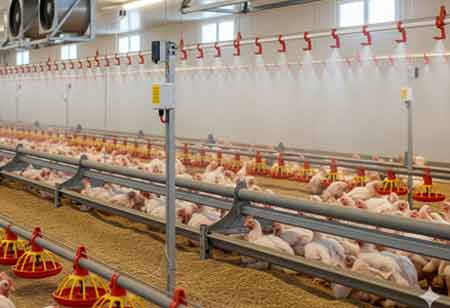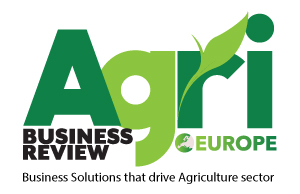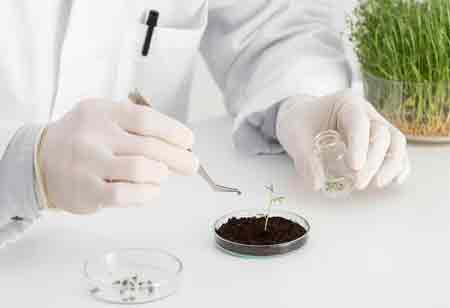Thank you for Subscribing to Agri Business Review Weekly Brief
The New Science of Poultry Environments
Modern poultry housing has evolved into a data-driven ecosystem, utilizing advanced technologies like AI to optimize bird welfare, productivity, and sustainability in farming practices.

By
Agri Business Review | Monday, December 08, 2025
Stay ahead of the industry with exclusive feature stories on the top companies, expert insights and the latest news delivered straight to your inbox. Subscribe today.
Modern poultry housing constitutes a managed ecosystem, engineered to enable birds to realize their complete genetic potential within a secure, salubrious, and low-stress environment. This contemporary reality, however, represents the culmination of several decades of advancements in environmental control. This trajectory has transformed poultry farming from an intuitive art into a data-driven science. The transition from manual curtain adjustments in open-sided structures to the implementation of artificial intelligence in climate-controlled facilities signifies one of the most substantial progressions in contemporary agriculture. This evolution has not only redefined avian welfare but has also emerged as the foundational element for productivity, efficiency, and sustainability within the global poultry sector.
In the early stages of commercial poultry farming, environmental control was rudimentary and largely reactive, relying heavily on farmers’ experience and sensory cues such as smell, sound, and temperature to guide decisions. Ventilation depended almost entirely on natural air currents. At the same time, heaters and brooders for chicks were operated manually with little precision, and fans—if available—were switched on or off based on perceived bird comfort. This left flocks highly vulnerable to external weather shifts: cold snaps could cause chilling and huddling, while heatwaves risked catastrophic heat stress. Air quality was another constant concern, with ammonia and moisture managed through subjective judgments of when to increase airflow. Although skilled farmers developed a keen sense for their flocks, the system lacked the consistency and precision necessary to optimize health and performance at scale.
The Dawn of Automation: Thermostats and Timers
The first major leap forward came with the introduction of basic automation. The simple thermostat was a revolutionary tool, allowing for the automatic control of heating and ventilation systems based on a single parameter: temperature. Farmers could now set a desired temperature, and the system would activate heaters when it dropped too low or turn on fans when it rose too high. This introduced a new level of consistency, reducing the risk of severe temperature fluctuations and freeing farmers from the need for constant manual adjustments.
Simultaneously, mechanical timers brought precision to lighting schedules. Proper light management is crucial for stimulating feed intake in broilers and regulating reproductive cycles in layers. Timers replaced manual switching, ensuring birds received a consistent and optimal duration of light and darkness each day. This initial wave of automation marked a fundamental shift from a reactive to a proactive management style. While still simplistic, it laid the groundwork for a more controlled and predictable production environment, demonstrating the immense value of removing human inconsistency from basic operational tasks.
The Sensor Revolution and Integrated Control
The transformation of poultry environmental control has been driven by the widespread adoption of sensors and the development of centralized, integrated controllers. Modern poultry houses have evolved into data-rich environments where management decisions are informed by continuous streams of real-time information, rather than relying on a single temperature reading. These advanced systems monitor and regulate multiple interconnected variables to optimize bird health and productivity. Temperature and humidity sensors, strategically placed throughout the house, create a detailed thermal map that eliminates hot and cold spots while maintaining proper moisture levels—critical for litter quality and respiratory health. Air quality monitoring has also advanced significantly, with sensors detecting gases such as ammonia (NH₃) and carbon dioxide (CO₂), enabling automated ventilation cycles triggered not only by temperature but also by air quality thresholds. This ensures birds consistently breathe clean air, reducing the risk of respiratory disease. Likewise, air pressure sensors, particularly in tunnel-ventilated houses, allow precise control of negative pressure to achieve uniform airflow and eliminate drafts. All of this data is integrated into a central controller—the “brain” of the poultry house—which orchestrates the heating, ventilation, and air conditioning (HVAC) systems. By seamlessly adjusting ventilation modes, from minimum airflow for chicks to high-capacity tunnel ventilation for market-age birds, the controller aligns environmental conditions with programmed growth curves and real-time sensor feedback.
The Smart Era: AI and Predictive Management
Smart systems move beyond simple reaction. By analyzing vast historical and real-time datasets—including sensor readings, feed and water consumption rates, bird weight data, and even external weather forecasts—AI algorithms can identify subtle patterns and make predictive adjustments. For instance, an AI-powered system might detect a slight drop in water consumption that is imperceptible to a human but could be the earliest indicator of stress or disease. It can then alert the manager or make minor environmental adjustments to mitigate the issue before it escalates.
These intelligent systems can perform optimization. Instead of following a fixed set of parameters for a flock's age, AI can continuously tweak ventilation, heating, and lighting to find the perfect balance that maximizes bird comfort while minimizing energy consumption. This self-learning capability ensures the environment is not just controlled, but continuously optimized for the specific needs of the flock at that exact moment.
The journey of environmental control in poultry farming is a story of technological progression from manual art to automated science. Each step—from the simple thermostat to the AI-driven algorithm—has brought greater precision, stability, and intelligence to the process. The modern poultry house is no longer just a structure providing shelter; it is a responsive and highly engineered ecosystem. This evolution remains the primary driver behind improvements in animal welfare, operational efficiency, and the sustainable production of poultry to meet the growing global population's needs.





